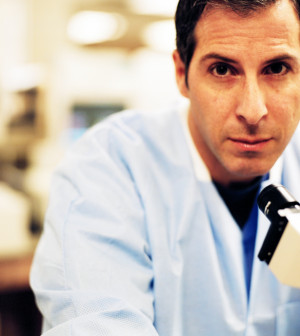- U.S. Births Declined in 2023, Marking End to Post-Pandemic Rise
- FDA Approves New Antibiotic Against UTIs
- New School Lunch Rules Target Added Sugars, Salt
- Dairy Cows Moved Across State Lines Must Now Be Tested for Bird Flu
- TikTok Riddled With Misleading Info on Health: Study
- Emulsifier Chemicals Are Everywhere in Foods. Could They Raise Diabetes Risk?
- Opioids During Pregnancy May Not Raise Psychiatric Risks for Offspring
- Could Heartburn Meds Raise Your Migraine Risk?
- Drug, Alcohol Abuse Goes Untreated in Many Ex-Prisoners
- Watchdog Group Says U.S. Food Recalls Rose Again Last Year
New Method May Improve Face Transplant Matches


WEDNESDAY, Oct. 9Face transplants — some with remarkable results — are increasingly becoming an option for people with devastating burns and other severe facial injuries. A new study finds that measuring five specific facial landmarks before the surgery may help better match donors and recipients.
“Although there have been many advances made in facial transplantation, reproducible methods of predicting donor-to-recipient match would be very useful, as it can take many months to locate an appropriate donor,” study co-author Dr. Bohdan Pomahac said in an American Society of Plastic Surgeons (ASPS) news release.
“We found that if certain facial measurements were off by as little as 1 millimeter between donor and recipient, they were not the best match for transplant surgery.”
Pomahac and colleagues conducted 61 virtual face transplantations representing donors and recipients of different ages and genders. They took nine soft-tissue measurements from each face before transplantation. Each virtual recipient’s appearance after transplantation was evaluated by 20 independent reviewers.
The researchers found that a 1-millimeter difference in five soft-tissue measurements led the reviewers to rate a facial transplant recipient as looking “very disfigured,” rather than “normal” or “mildly disfigured,” according to the study, which is scheduled for presentation Saturday at the annual meeting of the ASPS, in San Diego.
The five soft-tissue measurements were:
- Down the middle of the forehead,
- The inner corner of the eyes where the upper and lower eyelids meet,
- The outer corner of the eyes where the upper and lower eyelids meet,
- The distance or area from the nose to the chin,
- Mouth width.
“Our study provides early evidence for the importance of soft-tissue measurements in the planning of facial transplantation,” Pomahac said. “With future improvements to immune suppression and increased donor availability, matching soft-tissue landmarks may be an additional factor used to optimize post-transplant outcomes.”
Conclusions of studies presented at medical meetings should be viewed as preliminary until they are published in a peer-reviewed journal.
More information
The American Academy of Facial Plastic and Reconstructive Surgery has more about face transplantation.
Source: HealthDay
Copyright © 2024 HealthDay. All rights reserved.










